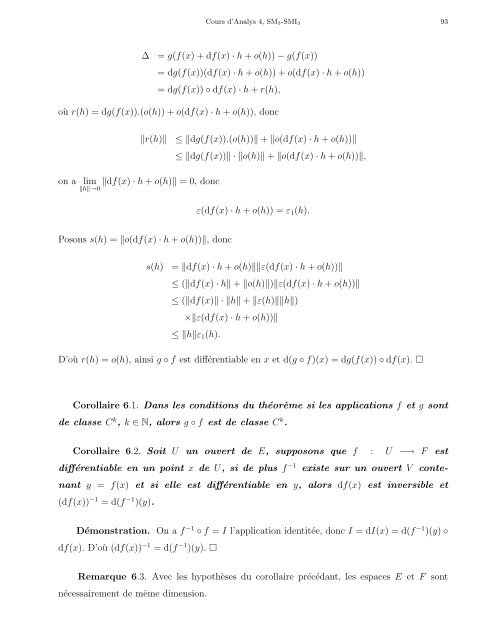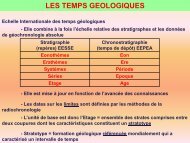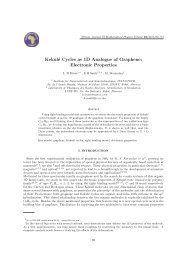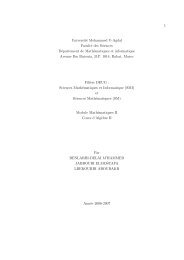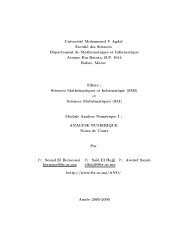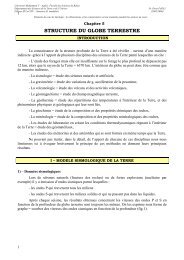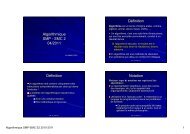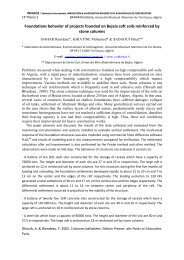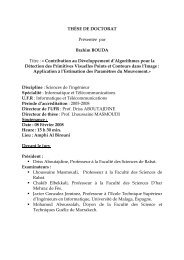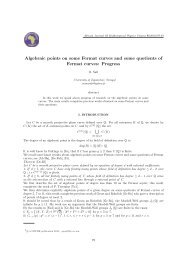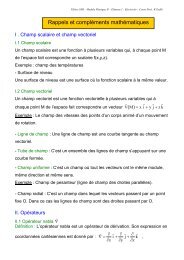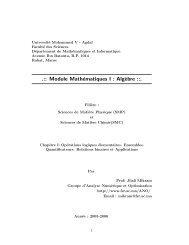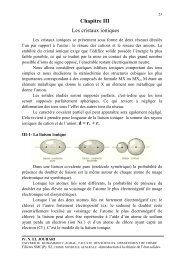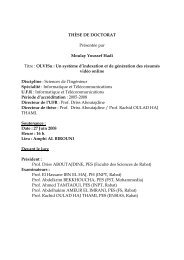Cours d'Analyse 4 - Faculté des Sciences Rabat
Cours d'Analyse 4 - Faculté des Sciences Rabat
Cours d'Analyse 4 - Faculté des Sciences Rabat
You also want an ePaper? Increase the reach of your titles
YUMPU automatically turns print PDFs into web optimized ePapers that Google loves.
<strong>Cours</strong> d’Analys 4, SM3-SMI3<br />
∆ = g(f(x) + df(x) · h + o(h)) − g(f(x))<br />
= dg(f(x))(df(x) · h + o(h)) + o(df(x) · h + o(h))<br />
= dg(f(x)) ◦ df(x) · h + r(h),<br />
où r(h) = dg(f(x)).(o(h)) + o(df(x) · h + o(h)), donc<br />
on a lim df(x) · h + o(h) = 0, donc<br />
h→0<br />
r(h) ≤ dg(f(x)).(o(h)) + o(df(x) · h + o(h))<br />
Posons s(h) = o(df(x) · h + o(h)), donc<br />
≤ dg(f(x)) · o(h) + o(df(x) · h + o(h)),<br />
ε(df(x) · h + o(h)) = ε1(h).<br />
s(h) = df(x) · h + o(h)ε(df(x) · h + o(h))<br />
≤ (df(x) · h + o(h))ε(df(x) · h + o(h))<br />
≤ (df(x) · h + ε(h)h)<br />
×ε(df(x) · h + o(h))<br />
≤ hε1(h).<br />
D’où r(h) = o(h), ainsi g ◦ f est différentiable en x et d(g ◦ f)(x) = dg(f(x)) ◦ df(x). <br />
Corollaire 6.1. Dans les conditions du théorème si les applications f et g sont<br />
de classe C k , k ∈ N, alors g ◦ f est de classe C k .<br />
Corollaire 6.2. Soit U un ouvert de E, supposons que f : U −→ F est<br />
différentiable en un point x de U, si de plus f −1 existe sur un ouvert V conte-<br />
nant y = f(x) et si elle est différentiable en y, alors df(x) est inversible et<br />
(df(x)) −1 = d(f −1 )(y).<br />
Démonstration. On a f −1 ◦ f = I l’application identitée, donc I = dI(x) = d(f −1 )(y) ◦<br />
df(x). D’où (df(x)) −1 = d(f −1 )(y). <br />
Remarque 6.3. Avec les hypothèses du corollaire précédant, les espaces E et F sont<br />
nécessairement de même dimension.<br />
93


